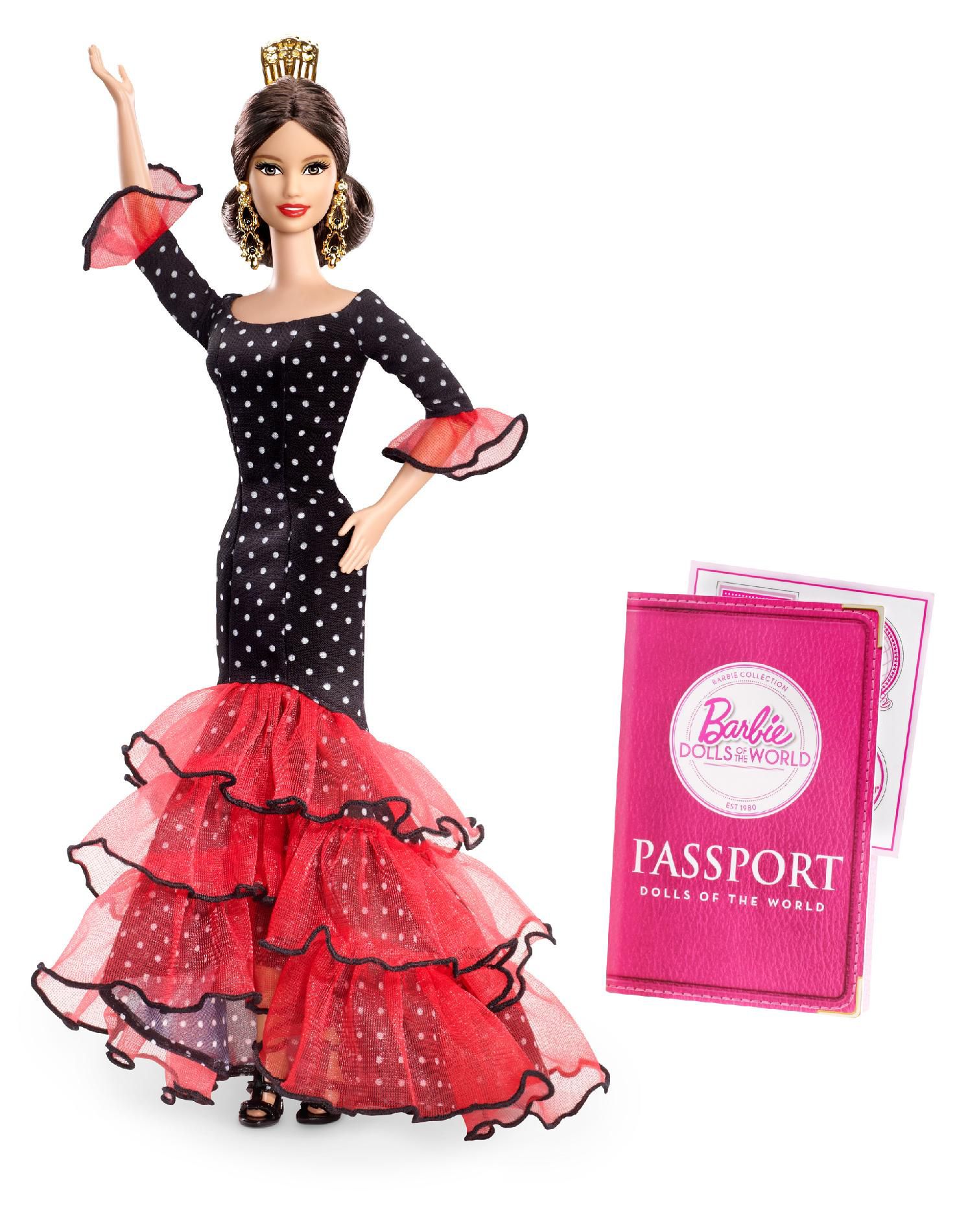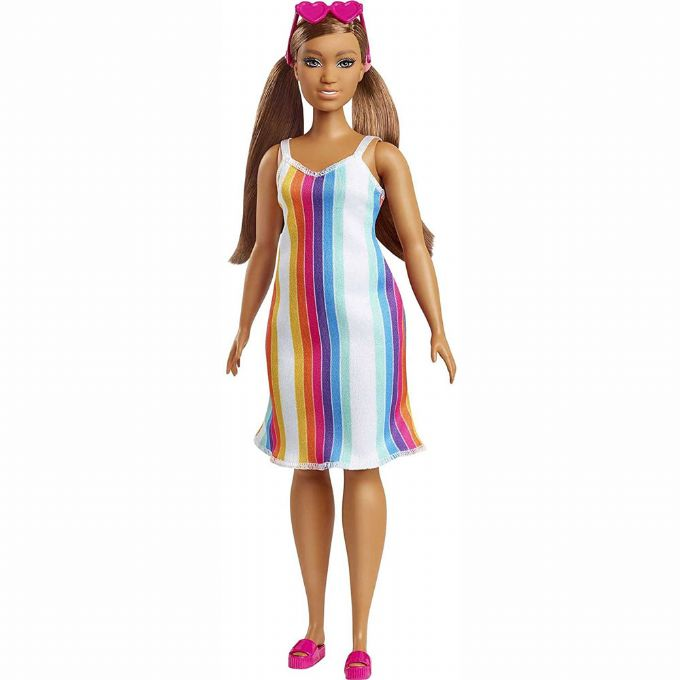Exploring The Heart And Soul Of Latina Barbie Dolls
When you think about the world of dolls, a certain iconic figure often comes to mind, a figure that has, arguably, been a mirror reflecting societal changes for generations. For a very long time, many people felt a need for toys that looked like them, that shared their background. This desire for seeing oneself in playthings is quite natural, a way for children to connect with their toys on a deeper level. The arrival of Latina Barbie dolls really marked a big step in how toys show the wonderful variety of people all around us.
These dolls are not just simple playthings; they are, in a way, tiny ambassadors of culture. They bring a bit of the rich Latin American heritage into homes and playrooms everywhere. It's about showing that beauty comes in many forms, with different skin tones, hair textures, and stories. This, you know, makes playtime more meaningful and helps children understand the wide world they live in.
So, we are going to talk all about Latina Barbie, from her early days to what she means today. We will look at why these dolls are so important for cultural understanding and for young people growing up. It's a pretty interesting story, one that touches on identity, pride, and the changing face of our shared global community.
Table of Contents
- The Story of Latina Barbie: A Cultural Journey
- Why Representation Matters: More Than Just a Doll
- The Cultural Tapestry of Latina Barbie
- Collecting and Celebrating: The Latina Barbie Community
- Looking Ahead: The Future of Latina Barbie
- Frequently Asked Questions About Latina Barbie
The Story of Latina Barbie: A Cultural Journey
The journey of Latina Barbie dolls began quite some time ago, reflecting a growing awareness that toys needed to show the real world. For many years, the standard doll look did not represent everyone. So, there was a clear push for more variety, a call to include all the beautiful faces that make up our neighborhoods and countries. This push came from families, community leaders, and people who simply wanted to see themselves in the things their children played with.
The first dolls aiming to represent Latina heritage started appearing a while back, though their early designs might seem a bit general now. They were, in a way, a starting point. Over the years, the creators of these dolls have worked to make them more true to life, showing the many different looks and styles within Latin cultures. This means thinking about skin tones, hair types, and even clothing that hints at specific traditions. It's a process of learning and growing, trying to get it just right.
It's interesting to consider how these dolls have changed. At first, there might have been just one "Latina" doll, a broad idea. Now, there are dolls that point to specific countries or traditions, like those inspired by Mexican culture, or those with features that might remind you of someone from the Caribbean or South America. This evolution shows a greater care for the nuances of identity. It is, perhaps, a sign of how we as a society are learning to appreciate the smaller details that make each culture special.
Key Moments in Latina Barbie's Presence
Here are some notable points in the journey of Latina Barbie dolls:
- Early Introductions: The very first dolls meant to represent Latina heritage appeared in the late 1970s and early 1980s. These were, you know, a general start.
- "Dolls of the World" Series: This collection, which began in the 1980s, often included dolls meant to represent various Latin American countries. It was a way to show global diversity.
- Increased Specificity: Over time, designers began to focus more on distinct cultural features and clothing styles. This made the dolls feel more authentic.
- Modern Interpretations: In more recent years, Latina Barbie dolls have embraced a wider range of contemporary looks and careers, reflecting the modern Latina woman. They are, you know, keeping up with the times.
- Collaborations: Sometimes, there are special edition dolls created with Latin artists or cultural figures, bringing a unique touch to the collection.
Why Representation Matters: More Than Just a Doll
Seeing yourself in toys, books, and media is really important for young people. When a child sees a doll that looks like them, it sends a powerful message: "You are seen, and you matter." For Latina children, a Latina Barbie can be a source of pride, helping them feel good about their heritage and identity. It's a simple thing, a doll, yet it carries so much weight in building a child's self-worth, so it does.
Beyond personal feelings, these dolls help educate everyone about the rich variety of Latin cultures. They can spark conversations in families about different traditions, languages, and histories. For instance, just like Google's service can translate words into over 100 languages, these dolls, in a way, translate cultural ideas, making them understandable and approachable for kids from all backgrounds. It's a little bit like opening a window to another part of the world, right there in the playroom.
Moreover, the presence of Latina Barbie dolls helps challenge old ideas and narrow views about what beauty looks like. For a long time, there was just one kind of beauty shown in toys. Now, with dolls that have different skin tones, hair textures, and facial features, children learn that beauty is wide and varied. This, you know, helps create a more accepting and understanding world for everyone. It's about showing that there is no single "right" way to look or be.
The Cultural Tapestry of Latina Barbie
The term "Latina" covers a huge range of cultures, traditions, and people. It's not just one thing, but many things, all connected by shared histories and languages. Think about the vibrant music you hear on radio stations like Latina, which plays the best pop latino, reggaeton, bachata, and salsa. Artists like Bad Bunny, Shakira, Karol G, and Rosalía, mentioned in the information you shared, show just how diverse and energetic Latin music is. Latina Barbie dolls try to capture some of that same spirit and variety.
Some dolls might wear clothing inspired by traditional dresses from Mexico or Central America, with bright colors and detailed patterns. Others might have hairstyles that are common in Caribbean communities, or features that remind you of people from South America. It's a way to show that "Latina" includes so many different looks and stories. Brazil, for example, is often called the champion of métissage, a place where many different cultures have blended together, creating a unique mix. This idea of blending and variety is something Latina Barbie tries to show.
These dolls also help tell stories about the contributions of Latin people to the world. They can inspire children to learn about famous Latin artists, scientists, or leaders. When you play with a doll that represents a certain culture, it can make you curious to learn more about that culture's history and its people. It's a small step, perhaps, but a very important one in building understanding and respect across different groups of people. You can, for instance, learn more about cultural representation on our site, which talks about these very ideas.
Collecting and Celebrating: The Latina Barbie Community
For many people, collecting Latina Barbie dolls is more than just a hobby; it is a way to celebrate heritage and art. Collectors often look for specific dolls that represent different countries or historical periods. Some dolls become quite sought after because of their unique outfits, their special features, or simply because they are part of a limited release. It's a bit like searching for information on the world's web, looking for exactly what you want, as Google helps you do with its many special features.
There are communities of collectors who share their passion, trade dolls, and discuss the history and meaning behind each release. These groups often meet online, sharing pictures and stories. It is a very active and friendly space, where people connect over their shared interest in these special dolls. This, you know, shows how something as simple as a doll can bring people together and create a sense of belonging.
Celebrating Latina Barbie is also about recognizing the progress made in toy design. It is a nod to the fact that companies are listening to consumers and trying to make products that are more inclusive. This ongoing effort is something to cheer for, as it means more children will grow up seeing themselves reflected in the toys they love. It's a positive step, really, for everyone.
Looking Ahead: The Future of Latina Barbie
The journey of Latina Barbie dolls is still very much in progress. As our world keeps changing, so too do our ideas about representation and identity. There is always room for more variety, for dolls that show even more of the incredible diversity within Latin communities. This means thinking about different body types, hair textures, and even more specific cultural references. It's an ongoing conversation, really, about how best to reflect the beauty of everyone.
We might see dolls that focus on different professions or life stories, showing that Latina women can be anything they dream of being. Perhaps there will be more collaborations with Latin artists and designers, bringing fresh perspectives to the doll's look and story. The goal is to keep these dolls relevant and meaningful for new generations of children. This, you know, helps ensure they continue to be a source of inspiration and pride.
Ultimately, the future of Latina Barbie is about continuing to tell diverse stories and celebrate the richness of Latin heritage. It's about ensuring that every child, no matter their background, can find a doll that speaks to them, that looks like them, and that helps them dream big. Just like how Google News brings together wide, updated coverage from sources all over the world, the story of Latina Barbie continues to grow, adding new layers and perspectives. You can also link to this page here for more insights into the broader topic of cultural representation in media.
Frequently Asked Questions About Latina Barbie
People often have questions about Latina Barbie dolls. Here are some common ones:
What does Latina Barbie symbolize?
Latina Barbie dolls symbolize cultural pride, diversity, and the importance of seeing oneself in popular toys. They represent the many different looks and traditions within Latin American heritage. It is, you know, a way to show that beauty comes in many forms.
Are there different types of Latina Barbie dolls?
Yes, there are many different types. Over the years, dolls have been created to represent various Latin American countries and cultures, with unique outfits, hairstyles, and features. Some are, perhaps, more general, while others are quite specific.
How has Barbie's representation of Latin culture changed over time?
Barbie's representation has become more detailed and specific over time. Early dolls were more general, but newer ones show a greater understanding of the diverse skin tones, hair textures, and cultural traditions within Latin America. It's a process of learning and improving, you know, to get it right.
The journey of Latina Barbie dolls is a lovely example of how toys can grow and change with society. They are, in a way, tiny symbols of a bigger conversation about who we are and how we see each other. By celebrating these dolls, we celebrate the incredible variety that makes our world so interesting. It is a pretty simple idea, really, but one with a big impact. For more information on cultural representation in toys, you might want to visit a trusted source like the Smithsonian Magazine, which often talks about these kinds of cultural shifts.

All about Latina Barbie Dolls
J Barbie Latina Videos

Barbie Doll (Latina) - Barbie Nuket GRB38 Shop - eurotoys.fi